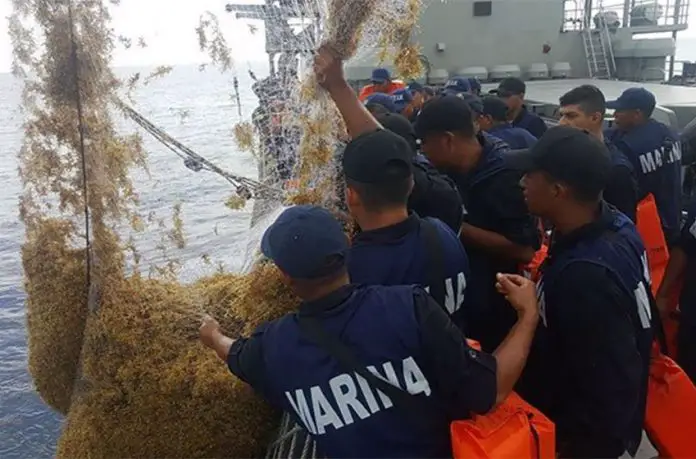The federal government will build four vessels designed to collect sargassum from the sea, the governor of Quintana Roo said yesterday.
Carlos Joaquín said in a statement that federal authorities made the announcement at a meeting to discuss strategies to combat the arrival of the seaweed on Caribbean coast beaches.
Each of the catamaran-style boats will cost 15 million pesos (US $783,500) and the first will be ready for service in six months, the governor said. The navy will build the vessels.
They will be equipped with a crane that can deposit the seaweed they collect into another boat or a vehicle prior to disposal.
Sargassum has already started washing up on Quintana Roo beaches and it is predicted that more than a million tonnes of the unsightly and smelly macroalgae will invade the state’s coastline this year.
At yesterday’s meeting, federal, state and municipal authorities as well as tourism sector representatives and members of civil society discussed medium and long-term strategies to combat and manage the arrival of sargassum.
They also looked at funding sources for clean-up efforts and canvassed opinions about where the sargassum should be discarded after collection.
President López Obrador announced earlier this month that the navy would lead efforts to combat the macroalgae’s annual arrival but hotel owners said this week that government inaction is forcing them to act on their own to deal with the tonnes of sargassum that are washing up.
In contrast, Joaquín said that authorities have taken immediate action to clean up beaches.
Also present at yesterday’s meeting was navy chief José Rafael Ojeda Durán, who said that the military is developing its own satellite system to identify the presence of clumps of sargassum as they approach the coast.
He also said that weekly flyovers of the Caribbean Sea will help authorities detect which parts of the Quintana Roo coastline are worst affected by the seaweed.
Two navy vessels arrived off the Quintana Roo coast nearly two weeks ago and began gathering sargassum. In two days, they collected 10 tonnes.
Source: El Financiero (sp), Reportur (sp)
